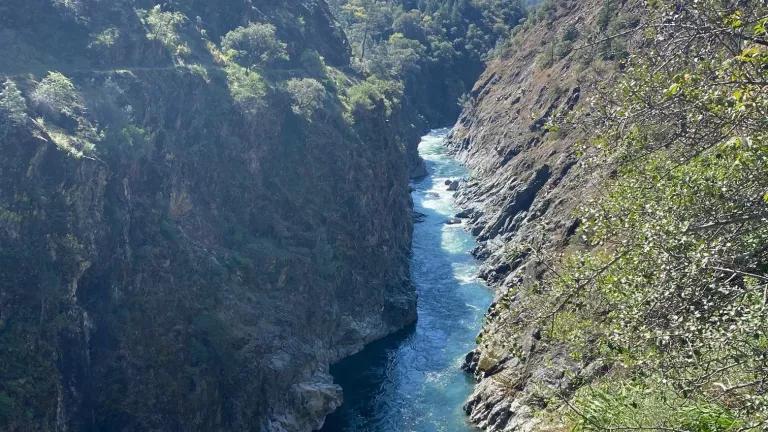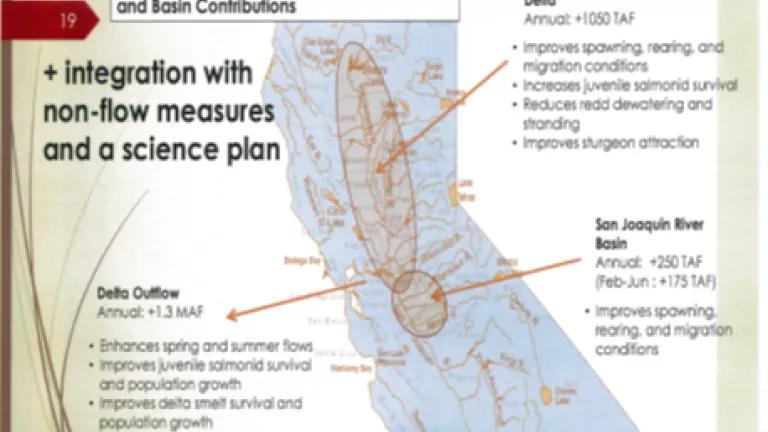No Time for Half Measures to Prevent Extinction in the Delta
There is no time for half measures, like those proposed in the Interim Operations Plan, if we are going to stop the destruction of the Bay-Delta’s native fish and wildlife.
With the planned operations of the federal Central Valley Project and State Water Project threatening to cause the extinction of winter-run salmon and Delta Smelt if drought continues in 2022, as well as causing devastating impacts to other salmon runs and the Tribes, fishing fleet, and communities that depend on healthy rivers and fisheries, our coalition of fishing and conservation groups (PCFFA et al) moved for a preliminary injunction and opposed the state and federal government’s woefully inadequate Interim Operations Plan in federal district court on December 16. There is no time for half measures, like those proposed in the Interim Operations Plan, if we are going to stop the destruction of the Bay-Delta’s native fish and wildlife.
It’s critical to provide adequate protections next year, given the environmental destruction that would be allowed by the Trump Administration’s ruinous 2019 biological opinions for the Bay-Delta. Most alarmingly, the federal National Marine Fisheries Service (“NMFS”) estimates that the Bureau of Reclamation’s operations of Shasta Dam in 2022 under the Trump BiOps could kill 88-100% of the eggs of endangered winter-run Chinook salmon that are laid next year, simply as a result of lethal water temperatures below Shasta Dam if next year is dry or critically dry. In 2021, NMFS estimates that the Bureau of Reclamation killed 75% of these endangered salmon solely because the water released from Shasta Dam was too hot. After very low survival of these salmon runs in 2020 and 2021 a third bad year in 2022 could mean extinction for this species. Delta Smelt is on the very brink of extinction, following years of State and Federal agencies refusing to implement even the minimum protections they have deemed necessary for survival of the species.
These devastating impacts are authorized by the Trump Administration’s biological opinions for the Delta, which are a plan for extinction—and are working as planned. While we appreciate the Biden Administration’s decision not to defend these biological opinions and to reinitiate consultation to develop new biological opinions, the Administration inexplicably refuses to admit these biological opinions are unlawful, despite overwhelming evidence of political interference and scientific misconduct during the development of these biological opinions—as well as the devastation suffered by our native fish and wildlife as a result of water project operations pursuant to these opinions the last two years.
The process proposed by the Biden Administration to replace the Trump BiOps would largely keep these biological opinions in place over the next 3 years as the Administration develops a new plan to prevent extinction. The Biden Administration proposes to make limited changes to the Trump BiOps during this interim period—changes included in an “Interim Operations Plan” proposed by the federal and state agencies. That Interim Operations Plan, however, would still result in catastrophe for our fish and wildlife, including devastating temperature-dependent mortality of endangered salmon if next year is dry or critically dry—34-73%, according to NMFS. These estimates of temperature-dependent mortality do not account for all the other sources of mortality (both from natural and human causes) that this highly endangered species faces as juvenile salmon migrate down the Sacramento River, through the Delta and San Francisco Bay—meaning even fewer will survive their migration downstream.
What’s more, even as the state and federal governments ask the Court to adopt the Interim Operations Plan, they are simultaneously seeking to gut water quality protections in the Delta next year through a Temporary Urgency Change Petition (TUCP) submitted to the State Water Resources Control Board. The proposed TUCP would allow the federal and state water projects to violate minimum water quality protections designed for drought years, even though the petition admits that reducing these protections would reduce survival of juvenile salmon migrating through the Delta (reducing survival by up to a third), and would further harm Delta Smelt, Longfin Smelt, and other species.
Instead of once again seeking to waive water quality standards and worsen the impact of drought on the environment, the state and federal governments should be exercising their authority to curtail deliveries to all of their contractors (except for water deliveries for human health and safety and to wildlife refuges, as required by federal law). In 2021, the state and federal water projects violated water quality standards in April, were granted a TUCP that weakened water quality standards in June through August, and were allowed to violate water temperature standards protecting salmon below Shasta Dam, sacrificing our native fish and wildlife, all while delivering millions of acre feet of water during the drought, largely to corporate agribusinesses, as this table from the State Water Resources Control Board confirms:

Our native fish and wildlife simply don’t have the luxury of waiting three years for adequate protections. While some water users have faced deep cuts in water supplies, others continue to unsustainably divert millions of acre feet of water during the drought, causing this environmental devastation. In 2022, the State and feds must take action to curtail these unsustainable water diversions before considering gutting water quality standards in the Delta and violating water temperature standards for salmon below Shasta Dam. No water users should be above the law, particularly given the deeply racist and inequitable water rights system that so-called senior water rights holders claim (inaccurately!) protects them from being required to reduce diversions to protect the environment.
This is why we’ve filed these motions with the federal courts, which seek to require implementation of the bare minimum of scientifically credible protections for salmon and other endangered species next year, after first ensuring water deliveries for human health and safety.


